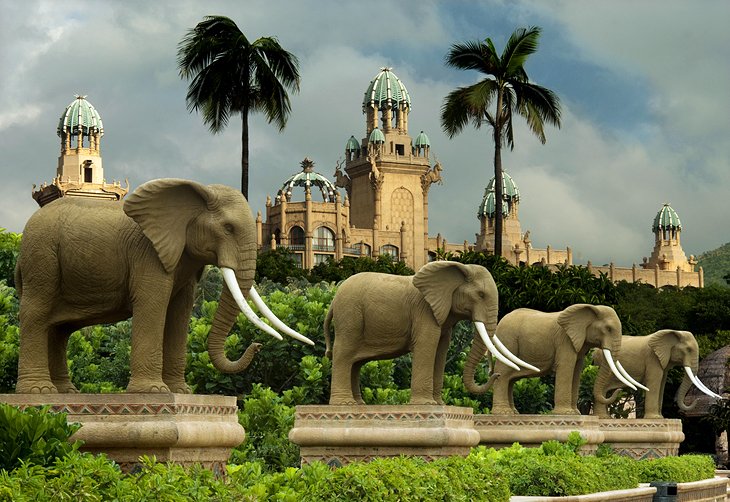Indicators on Johannesburg North Attractions You Need To Know
Indicators on Johannesburg North Attractions You Need To Know
Blog Article
8 Easy Facts About Johannesburg North Attractions Shown
Table of ContentsThe Ultimate Guide To Johannesburg North AttractionsThe Johannesburg North Attractions DiariesNot known Facts About Johannesburg North AttractionsThe Johannesburg North Attractions DiariesJohannesburg North Attractions Things To Know Before You BuyThe Best Guide To Johannesburg North AttractionsThe 15-Second Trick For Johannesburg North Attractions
Nevertheless you must maintain protection in mind and travelers should continue to be sharp at all times when in unknown environments. Talk with the citizens when you remain in town to learn about the area you are remaining in. Johannesburg North attractions. When on the road (this doesn't relate to mall and other protected atmospheres) finest general advice is to attempt your ideal to resemble a neighborhood and to prevent showing any type of riches
Examine This Report on Johannesburg North Attractions
Professor Revil Mason O. J. (Thomson, 1946) checked out the Witwatersrand's pre-colonial history. His archaeological job exploded the 'em pty land' misconception, according to which the region was without human habitation prior to the arrival of European inhabitants. In his magazines Prehistory of the Transvaal: A Document of Human Activity (1962) and Origins of Black People of Johannesburg and the Southern Western Central Transvaal AD 3501880 (1986 ), Professor Mason showed the extent of social and economic growth in the location prior to Europeans set foot below.

Examine This Report about Johannesburg North Attractions
In 1878, David Wardrop discovered gold in quartz capillaries at Zwartkop, north of Krugersdorp. In 1881, Stephanus Minnaar came across gold on the farm Kromdraai, near the Cradle of Mankind.
In March 1886, an outcropping (quickly to be called the Main Reef) was found, rather luckily, on Gerhardus Oosthuizen's farm Langlaagte. Some state that the Lancastrian coal miner George Walker found this reef. Another travelling English miner, George Harrison (that had previously functioned in Australian mines) acquired a prospecting permit in regard of Langlaagte in May 1886.
He determined to carry on in a quest for greener fields, and disposed of his Langlaagte insurance claim for the princely sum of 10. Alas: below lay the wealthiest goldfield ever discovered. The discovery of this abundant auriferous reef provoked a gold thrill that signified the end of bucolic serenity in the southerly Transvaal.
It would certainly, within six years, become the biggest town in southern Africa. Within a decade, it would make the Z. A. R. till then an anarchical and bankrupt little state the most affluent country in Africa. By the turn of the century, the Z. A. R. was to exceed Russia, Australia and the United States of America to end up being the globe's leading gold manufacturer, generating more than a quarter of the globe's gold.
Some Known Incorrect Statements About Johannesburg North Attractions
It was called Ferreira's Camp, called after Colonel Ignatius Ferreira. He was a Boer traveler upon whom the British authorities had presented the status of Companion great post to read of the Many Identified Order of St Michael and St George (qualifying him to the post-nominal letters C. M. G.) in thankfulness for his function in the battle that had actually deposed the Pedi king Sekhukhune in 1879.
Soon the camp was brimming with tents and wagons as novices got here daily from everywhere. By September 1886, some 400 individuals resided in Ferreira's Camp, which soon flaunted built iron and timber buildings. Two other camps were developed: Meyer's Camp on the ranch Doornfontein, and Paarl Camp. The latter was nicknamed Afrikander Camp; lots of people from the Cape Colony resolved there.

The Buzz on Johannesburg North Attractions
This name gained currency by word of mouth, such that the State Secretary verified the name to the Mining Commissioner on 9 October 1886. Stands in the village were auctioned on 8 December 1886. While some stands were offered for 10, others were knocked down for just sixpence.
2 years later on, these erven were to alter hands for as long as 750 each. The tented camps decreased as a dorp of corrugated iron buildings developed and expanded north of the mines located along the Main Coral Reef Road. Locations such as Jeppe's Community (where working-class immigrants erected their residences) and Doornfontein (where the wealthy new 'Randlords' began to build their luxurious homes) were soon included in the ever-expanding map of the community.
Rumored Buzz on Johannesburg North Attractions
Aside from the street names, there were no indications of Johannesburg being situated in a Dutch-speaking nation. Years later on, C. W. Kearns O. J. (one of the very first children enrolled at St John's University in 1898) would certainly remember: 'An unusual reality concerning Johannesburg was that, although it remained in the [Boer Republic], almost everyone spoke English and also the Government slaves resolved one in English, unless they were first attended to in the Taal (or Low Dutch)'.
Britain had an interest in ensuring optimum conditions for gold manufacturing on the Witwatersrand, and that the gold was exported to London rather than Berlin a necessary you can try this out rendered all the try this web-site much more clamant by the Z. A. R.'s enhancing toenadering with Germany. Mine owners got on a clash with President Kruger, whose plan of monopolistic concessions (frequently approved to his cronies) stopped mining companies from acquiring materials of products (especially dynamite) and work on their very own, more affordable terms
Johannesburg North Attractions for Dummies
In 1890, the Volksraad had actually limited the franchise to white guys that had actually resided in the Z. A. R. for fourteen years or longer, therefore invalidating most of the immigrants (who occurred to be the significant contributors to the fiscus). Agitation for the ballot was a plain pretext for advertising a different agenda; many uitlanders concerned themselves as short-lived site visitors and had no intention of remaining in the Z.
Report this page